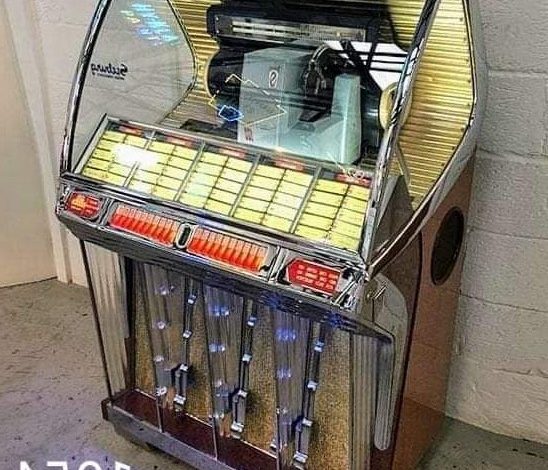The Jukebox A Time Capsule of 1950s Americana

ADVERTISEMENT
The Jukebox: A Time Capsule of 1950s Americana
Introduction
The 1950s in America were characterized by a wave of post-war prosperity, cultural rebirth, and technological innovation. Among the most iconic symbols of this vibrant era is the jukebox, a fixture in diners, bars, and dance halls across the country. Serving as both a musical repository and a gathering point, the jukebox became a pivotal element of social interaction and musical exploration. The image of a 1954 jukebox, with its gleaming lights and chrome finish, transports us back to a decade filled with the sounds of rock ‘n’ roll and rhythm and blues.
Main Content
- Cultural Impact: The jukebox was more than just a music player; it was a social catalyst. In the racially and socially stratified America of the 1950s, jukeboxes provided a neutral ground where people of all backgrounds could come together over a shared love of music. This unifying effect was particularly significant in the context of the emerging civil rights movement and the cultural integration seen in the music of the era.
- Technological Marvel: Technologically, the jukebox was a marvel of its time, incorporating advancements in sound engineering and automated machinery. The ability to select from a variety of records gave listeners unprecedented control over their musical environment, making the jukebox a personal, interactive experience.
- Economic Significance: Economically, jukeboxes were a boon to both music producers and venue owners. Record companies found a lucrative outlet for their products, while establishments hosting these machines enjoyed increased patronage, as people lingered over their favorite tunes.
- Preservation and Nostalgia: Today, vintage jukeboxes are highly coveted collectibles. Restoration enthusiasts and collectors prize them for their aesthetic and historical value, often undertaking detailed restoration projects to bring them back to their former glory. Their appeal is a testament to the nostalgia for an era perceived as simpler and more vibrant.
- The Music: Perhaps most importantly, the music played from jukeboxes helped define the soundtrack of the 1950s. Artists like Elvis Presley, Chuck Berry, and Patsy Cline owe a part of their legendary status to the exposure they received through these music machines, which helped propel rock ‘n’ roll into mainstream culture.
Conclusion
The 1954 jukebox is not merely a relic; it is a vibrant symbol of a defining era in American history. It encapsulates a time of significant cultural, social, and technological shifts. As a beacon of the golden age of rock ‘n’ roll, the jukebox continues to be celebrated not only for its aesthetic appeal but also for its role in shaping the musical tastes of a generation and fostering a sense of community across diverse groups. The enduring charm of the jukebox, with its promise of musical discovery and connection, ensures its place as a cherished icon of 1950s Americana.
ADVERTISEMENT




